Aquaria dissection
2008, March 13th 5:11 AMDeveloper: Bit Blot
Completion level: Main ending, not 100%
This is NOT a spoiler-free review and I'm not going to be making any attempt to keep spoilers out of this one, or flagged before they show up.
Aquaria is going to be a tough game to talk about.
Let's start with the easy stuff: the art. Aquaria is fucking gorgeous. I described Layton as "clean", but Aquaria can only be described as "lush". The game takes place almost entirely underwater, and Aquaria has done a fantastic job capturing the feel of tropical reefs. Colors are bright and saturated, schools of fish dart between reeds which sway gently in currents, and nearly every movement causes ripples to wash out from your character. When I had a difficult time seeing it was because I was in an intentionally badly-lit area. The only creatures I had trouble recognizing were the ones who were camouflaged. The animations are very well-done, with sprites deforming appropriately to create realistic-looking movement. I found this game to be even prettier than Odin Sphere, and that's saying quite a bit. The music is probably the weakest part, as none of the tracks are particularly memorable or exciting, and even it sets the mood quite well. The controls are fluid (once you switch to a gamepad, at least – I personally couldn't stand the mouse). To put it simply, the game's pretty, and it feels good to play it.
The game itself is an exploration game, similar to Metroid or Castlevania. The main character, Naija, has a collection of songs she can sing that do various things. The majority of these songs transform her into another form, giving her a new set of powers, from "ability to shoot fireballs" to "ability to make plants grow" (which is moderately more useful than it sounds.) The bulk of the game involves you exploring new areas to unlock new forms which you can then use to explore more areas. It's not a game design that's particularly popular right now, but it's certainly a classic and it's one I've always loved.
So there's the easy stuff. What Aquaria does well, it does really well, in an excellent way but not one I'm really going to talk about. I want to make it clear, before I move onto the rest, that Aquaria really is a good game – this isn't a review, it's a dissection, and the parts I want to talk about most are the ones that Aquaria got wrong. And that's why I'm going to spend the rest of this talking about Aquaria's problems.
The writing is . . . dubious, in places.
Naija starts out alone with amnesia. It's a cliche, but a common and useful one. She spends a lot of time moping about how alone she is, and how she doesn't know where she came from or where anyone else is, and – pretty quickly – the player actually ends up resigned to being alone. It's a lonely game. It's just Naija, and a huge sea of water, and a lot of aquatic creatures, and it has a certain stark beauty.
And then Li shows up. Li is a human. Naija meets Li and instantly falls completely in love with him, despite the fact that they never communicate in any way. Not just love – dedication and devotion. It comes out of nowhere – she quite literally falls in love with the first living sentient creature she meets. It feels like a high school romance. "Oh! Boys exist! And I LOVE THEM. Forever." There's no courting, there's no romance, there's absolutely nothing besides the game informing you that, oh, by the way, you're now in love with this dude.
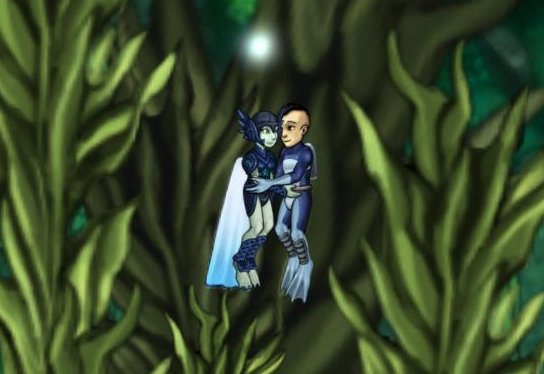
Li proceeds to follow you around the game. The stark solitary exploration is gone. Instead, there's this random guy following you. He shoots things occasionally. He's not particularly useful (his firepower is extremely limited) – largely he just serves to make you feel less alone. Unfortunately, the loneliness was, for me, one of Aquaria's great strengths. Before I met Li, I felt like I was exploring a huge, uncaring and yet beautiful world. Li didn't make me feel cared for and didn't make me feel like my quest was either more or less important. He was just a guy, following me and distracting me from the ocean's beauty.You can tell Li to knock it off and stay at home, which I did. But eventually you need him. You could claim this is making a statement about human social behavior, or the problems with trying to be self-sufficient, and maybe it is, but honestly I just felt irritated by him.
I don't actually believe it's a statement about human social behavior, though, because the plotline is unambiguous and blunt. It's about how much gods suck. This is a recurring theme in the game – every time you find out about a destroyed race, it was destroyed because a god decided to destroy it. Maybe it was the god that created the race. Maybe it was a different god. But every time a god is mentioned in the entire game (and this happens frequently) the god is described or shown destroying things.
It's not clear whether this was an intentional decision or not because it's never explicitly mentioned. If there were good gods involved in plotlines I wouldn't have had trouble with the plurality of evil gods. If Naija had, at any point, mused about how all the gods she encountered were evil, it would have at least shown me that the writer was aware of the evil-god fixation. But neither of those things happened. I'm left not knowing whether it was an intentional theme – perhaps it was meant to be a recurring plot issue, or perhaps the writer is just an obsessive atheist and hates the idea of benevolent gods. I don't know which and I quickly ended up feeling very disconnected from the plot thanks to how out-of-place this recurring element felt.
Let me set the stage for the last part of my playing. I was perhaps 3/4 of the way through the game. I'd found Li, and been annoyed by him. I'd started to notice and be sourly amused at the recurring Evil God issue. I still loved the smooth gamepad controls, and I was still enjoying the sheer beauty of the game. The game was annoying me slightly, but largely I still loved it. I entered a new area called The Abyss.
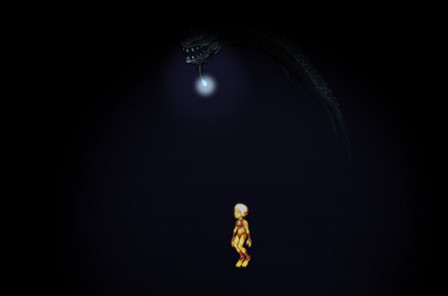 The Abyss is dark. There is no light. The only light in the level comes from you, in your Sun Form, which coincidentally means you can't attack. You're either reliant on Li for attacks or you're switching forms like a madman for any kind of combat. Or you simply run away from everything, which is what I did. Down down down in the bottom of the Abyss is a large door, marked with symbols that I recognized from Li's cave. I checked it out, ran into it a few times, tried playing Li's song, tried shooting it with fireballs, growing plants on it, and using all the forms I could to get it open. Nothing worked. Eventually I gave up and went looking for another area I hadn't yet explored.
The Abyss is dark. There is no light. The only light in the level comes from you, in your Sun Form, which coincidentally means you can't attack. You're either reliant on Li for attacks or you're switching forms like a madman for any kind of combat. Or you simply run away from everything, which is what I did. Down down down in the bottom of the Abyss is a large door, marked with symbols that I recognized from Li's cave. I checked it out, ran into it a few times, tried playing Li's song, tried shooting it with fireballs, growing plants on it, and using all the forms I could to get it open. Nothing worked. Eventually I gave up and went looking for another area I hadn't yet explored.
Two hours later I went and asked for help on the forum. It turns out that the door can't be opened using the game pad. You have to click on it.
Yes, that's right. One of the supported control methods leaves the game completely unbeatable. There's no way to realize this on your own, there's no sign that this is the case. If you haven't been using the mouse to get around you're simply not going to think about clicking on it. It is not something that comes to mind. I'd just spent literally two hours swimming around pointlessly because it hadn't occured to the game designers to maybe, you know, trigger the door script when I moved close to the door.
Saying I was annoyed would be an understatement.
I wandered through the next area, solving some (admittedly pretty cool) puzzles, and then Li got kidnapped. Remember that Li just showed up out of nowhere perhaps five hours ago, and I was told Naija just spontaneously fell in love with him. Well, Naija went on this huge emotional tirade, ending with the following line:
"I knew that I would hunt down that dark creature . . . and kill it. I would not be alone again."
Naija. Come on. You've known this guy for less than ten hours. I know this because I've been playing for less than ten hours, and I met Li midway through, and then I had him stay in a cave for a good chunk of time. On top of that, you have literally not spoken to him once. There has been no period of time in this game where you could have had a long heartfelt talk with him that I couldn't see. I have had conversations with strangers that lasted longer than your entire romance. Stop being such a drama queen.
I continued on to rescue Li from whatever had kidnapped him, entering a new area in the Abyss that had previously been closed off from me. Now, a lot of previous puzzles had some kind of hint attached to them. Naija had feelings about the solution, or hunches, or said things like "I decided to check out the X and see if it was important", which is usually a good sign that maybe X is important. But the first puzzle I ran into was spelled out. "I found the X. And I knew that it would do Y." Somehow, Naija wasn't guessing anymore. How did she know? No clue. If she'd said that the knowledge came out of nowhere, okay, fine. If she'd said a memory returned to her, I can buy that. If she talked about writing on cave walls, great, we've got a reason. But no, none of those. Another glaring issue, on top of a lot in quick succession.
And then the end boss turned out to be . . .
. . . oh come on, you can guess, right?

Yeah. It was an evil god.
Okay. Deep breath.
I've written the last few paragraphs to demonstrate how annoyed I was getting at the game. Any one of those issues would have been a relatively small issue. Any one of them would have resulted in me sighing heavily, making a note, and then probably mentioning it in this dissection. But four big issues, back-to-back, starting with a seriously frustrating one, did more to knock me out of the game than nearly anything I've seen before. The first 3/4 of the game was deep and immersive and fantastic. The last 1/4 of the game left me annoyed and laughing at it. All the drama, all the suspense, all the beauty it had built up? Gone . . . and largely because I had to click on a door, instead of just bumping into it.
Summing It Up
The game's beautiful, in more ways than one. The gameplay is well-done. The plot is dubious and somewhat cliche, and unfortunately written in several places. And the interface is great and fluid . . . except in one unfortunate location.
Suspension of disbelief is an incredibly precious and fragile commodity. If you're lucky, your players will forget they're playing a game and just enjoy what they're doing. That's the ultimate goal of virtually all games. You have to be agonizingly careful to avoid squandering that, and once it goes away, it's difficult at best to get back. Once that first problem hits, even things that wouldn't normally be an issue can throw the player right back out of the game over and over again.
I've talked about "fighting the villain" vs "fighting the game" before, and this is the textbook example of the latter. The door wasn't hard to open. Figuring out how to tell the game I wanted to open the door? That was deadly. And I've never had it demonstrated quite as thoroughly as I did in Aquaria.
Aquaria is going to be released on Macintosh shortly. The forums say that a PC patch will be released along with the Mac release that, among other things, fixes the door bug. It is a good game, and it's very worth playing. But if you buy it before the patch, and you find yourself stuck, and you're using a gamepad . . . try clicking on things.

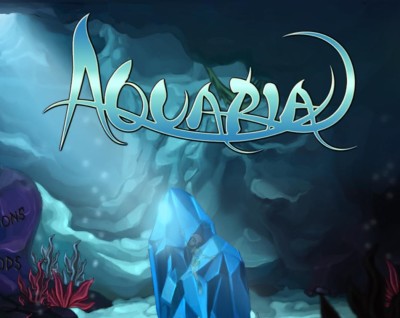


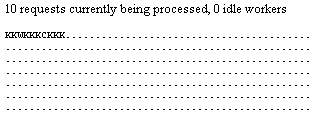 In my case, this site is running on a virtual server with 256 megs of RAM. My average Apache process was eating about 12 megs, and MySQL was consuming another 50 megs, and the OS was taking another chunk. I couldn't get more than ten processes running without absolutely killing my server. (When MySQL crashes due to running out of RAM I really don't care that I can serve error pages 50% faster.)
In my case, this site is running on a virtual server with 256 megs of RAM. My average Apache process was eating about 12 megs, and MySQL was consuming another 50 megs, and the OS was taking another chunk. I couldn't get more than ten processes running without absolutely killing my server. (When MySQL crashes due to running out of RAM I really don't care that I can serve error pages 50% faster.)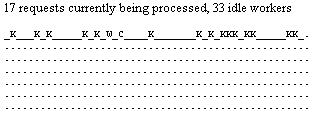 By default, worker mode spawns 25 threads per process, with multiple processes if it needs more connections than that. Under heavy load, each thread spends most of its time sending or receiving data (Biff's crummy modem again). In reality only one or two threads will actually be running PHP at a time – so the memory usage for this single process is, at most, twice that of the prefork processes. But we can now handle 25 times as many connections.
By default, worker mode spawns 25 threads per process, with multiple processes if it needs more connections than that. Under heavy load, each thread spends most of its time sending or receiving data (Biff's crummy modem again). In reality only one or two threads will actually be running PHP at a time – so the memory usage for this single process is, at most, twice that of the prefork processes. But we can now handle 25 times as many connections.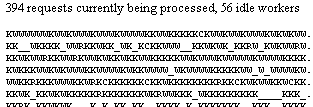 Before these changes, my server couldn't handle more than ten simultaneous connections. I've used website stresstesting software since – I've managed up to 400, and the server doesn't even break a sweat. I can't do higher because my connection starts dying horribly.
Before these changes, my server couldn't handle more than ten simultaneous connections. I've used website stresstesting software since – I've managed up to 400, and the server doesn't even break a sweat. I can't do higher because my connection starts dying horribly.

